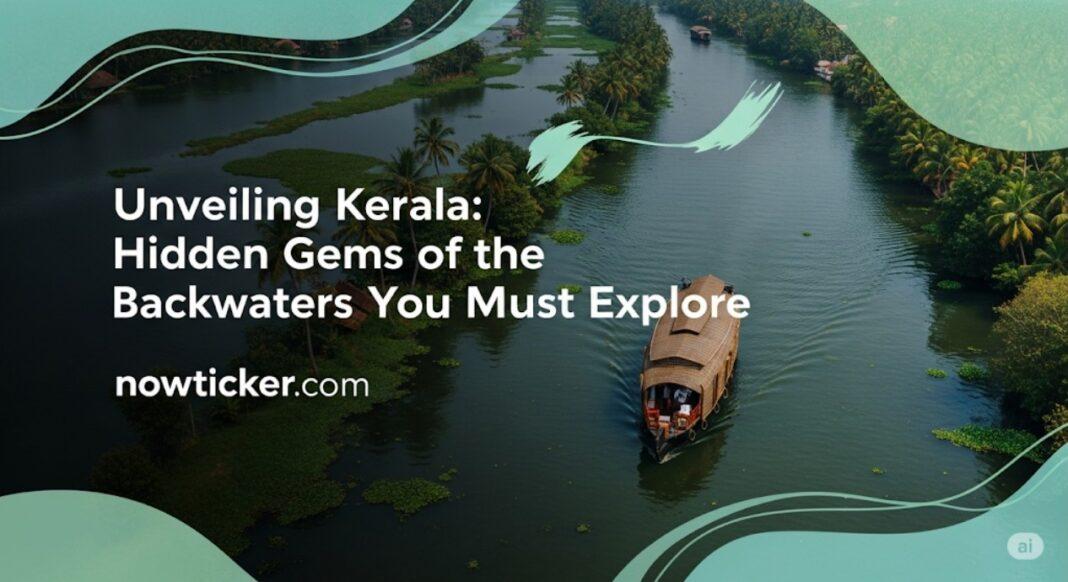Contents
Introduction
Kerala, often referred to as "God’s Own Country," is a slice of paradise nestled on the southwestern coast of India. Renowned for its stunning landscapes, rich culture, and unique backwaters, Kerala offers an unforgettable experience for those who venture into its hidden treasures. The backwaters—an intricate network of lagoons, lakes, and canals—serve as the lifeblood of Kerala, connecting enchanting villages and bustling towns. While much has been said about the more commercialized tourist spots, such as Alleppey and Kumarakom, numerous hidden gems await exploration, offering authentic experiences unblemished by heavy tourism.
This article aims to take you on an immersive journey through the lesser-known backwater destinations in Kerala, delving into their rich histories, local culture, and unique experiences they offer. We will include real-world examples, reviews, and expert insights to create a comprehensive guide, making it valuable for anyone considering a trip to this enchanting state. By the end of this article, you will not only appreciate Kerala’s wider charm but also gain practical tips to navigate its mystical backwaters.
The Allure of Kerala’s Backwaters
Kerala’s backwaters are a unique ecosystem, formed by a combination of lakes, canals, and rivers stretching across the state. This intricate network of waterways, rough at times, but tranquil in many places, serves as an ideal setting for various water-based activities, showcasing the natural beauty and offering glimpses into the day-to-day lives of local communities.
According to a study by the Kerala Tourism Development Corporation (KTDC), tourism in the state has been growing steadily, with a marked increase in visitors looking for authentic experiences. Many travelers are now opting for less-traveled paths to experience the true essence of Kerala. This phenomenon has led to the rise of eco-tourism, encouraging responsible travel while allowing local communities to benefit from tourism. Travelers are increasingly opting for houseboat experiences and village tours that highlight the region’s natural beauty, rich traditions, and culinary delights.
1. Kuttanad: The Rice Bowl of Kerala
Often overshadowed by its neighboring backwater destinations, Kuttanad is a lush region renowned for its extensive paddy fields. Situated below sea level, this region is remarkable for its unique ecosystem and agricultural practices. Kuttanad is celebrated for its farming methods, particularly the cultivation of ‘Karimeen’ (pearl spot fish), which thrives in local waters.
Real-World Experience: A traveler named Jasmine Chatterjee noted, "Kuttanad was an unexpected highlight of my trip. The lush green fields, authentic local cuisine, and warm hospitality made it a memorable experience."
Visitors can engage in traditional farming activities, learn to rice plant, and even take part in boat races during the local festival season. Through sustainable practices, Kuttanad showcases a model of agriculture that nourishes the local economy while remaining eco-friendly.
2. Kumarakom’s Villages: Unearthing Authentic Culture
While Kumarakom is recognized for its scenic backwaters, its surrounding villages are often overlooked. These villages offer a deeper understanding of local customs and traditions. You can wander through villages like Puthanangadi and Mancompu, where you can observe everyday life unfolding—fishermen casting nets, women weaving coir, and markets bustling with activity.
Expert Insight: Dr. Nisha K., a cultural anthropologist specializing in Kerala’s backwaters, said, "Experiencing local craftsmanship and traditions in these villages can provide travelers with a unique lens into Kerala’s culture."
Engaging with local artisans will give you insights into their crafts, like coir-making or traditional boat-building. Participating in such workshops not only rejuvenates local industries but also empowers the community through the recognition of their cultural significance.
3. Thanneermukkom: A Diverse Ecological Marvel
Thanneermukkom is a village well-known for its distinctive saltwater and freshwater lock system, designed to control the influx of saltwater from the sea into the backwaters. This unique engineering marvel is crucial for protecting the rice cultivation in Kuttanad.
User Review: An expert in sustainable tourism mentioned, "Visiting Thanneermukkom is a must for those interested in ecological systems. It emphasizes the balance of nature and human activity.”
The region is teeming with wildlife, including various migratory birds and native fish species, making it an ideal spot for eco-tourists and bird watchers. The vibrant backdrop of rice fields and the tranquil water bodies make it a scenic and peaceful escape for visitors.
4. Vembanad Lake: A Serene Escape
Vembanad is the longest lake in India and serves as one of the most significant backwater ecosystems in Kerala. Though parts of it have become popular tourist destinations, there are secluded spots around the lake worth exploring. Small islands like Pathiramanal and Kavalam offer unique experiences amidst rich biodiversity.
Testimonials: A couple, Ravi and Anisha, shared, "Sailing on Vembanad at sunset was magical! The tranquility and beauty of the surroundings felt surreal."
To maximize your experience, consider hiring local guides who can navigate the lesser-known paths of Vembanad, introducing you to hidden spots and teaching you about the lake’s ecological significance.
5. Alleppey’s Village Experience: Beyond the Houseboats
Most tourists head to Alleppey for the famous houseboat experience, but the villages surrounding Alleppey hold untold treasures. Explore the charming villages like Mararikulam, known for its serene beaches and traditional fishing practices. The local seashore is dotted with stilt houses where fishermen work sustainably, preserving their lifestyle and culture.
Expert Insight: Tourism consultant Alex Joseph states, "Visiting these villages can elevate your experience in Alleppey from mere observation to meaningful interaction with local life."
Opt for homestays to immerse yourself in local traditions, from cooking classes to fishing with locals, thus gaining a genuine taste of Kerala.
Plan Your Visit Wisely: The best time to visit Kerala, specifically the backwaters, is between October and March when the weather is pleasant. This period sees less rainfall and yields the best vibrant landscapes.
Choose Eco-Friendly Accommodation: Consider opting for eco-friendly homestays or boutique hotels that promote sustainable tourism. Look for accommodations that contribute to the local economy and emphasize environmental responsibility.
Engage Local Guides: Hiring local guides not only enhances your experience but also contributes to community livelihoods. They can offer insights into local customs, hidden spots, and unique experiences you wouldn’t find in traditional guidebooks.
Try Local Cuisine: Don’t miss out on sampling local delicacies such as ‘Karimeen Pollichathu’ (fish steamed in banana leaf) and ‘Appam’ with ‘Stew’. Many local families offer cooking classes that introduce you to traditional cooking techniques.
- Be Respectful of Traditions: Engage respectfully with local communities. Always ask for permission before taking photographs of people, and be mindful of cultural norms in villages.
FAQs
1. What is the best time to visit the backwaters in Kerala?
The best time to visit is from October to March, when the weather is ideal and the landscapes are vibrant.
2. Are there eco-friendly accommodations in the backwater areas?
Yes, many homestays and boutique hotels promote sustainable tourism, focusing on responsible practices that benefit local communities.
3. How can I engage with local culture during my visit?
You can engage with local culture through village tours, workshops in traditional crafts, cooking classes, and participating in local festivities.
4. Is it safe to travel in the less-popular backwater regions?
Yes, most lesser-known regions are safe for travelers. However, it’s always wise to practice common sense and keep your belongings secure.
5. Can I hire local guides for my exploration?
Absolutely! Hiring local guides enhances your experience by providing you insights into local customs, hidden spots, and unique narratives tied to the landscape.
Conclusion
Kerala’s backwaters are a living tapestry woven with rich culture, astounding biodiversity, and sustainable practices. While destinations like Alleppey and Kumarakom offer popular experiences, it’s the hidden gems that truly embody the soul of these waters. From engaging with local communities in Kuttanad to attending traditional festivals in hidden villages, the allure of Kerala’s backwaters extends beyond mere visuals.
Tourists now look for deeper, more meaningful interactions, aligning with the sustainable travel trend that emphasizes local engagement. As you plan your journey to Kerala, consider stepping off the beaten path to explore these hidden treasures. The enchanting landscapes, the warmth of local hospitality, and the richness of the cultural experience await you. Venture into the heart of Kerala’s backwaters, and you might just leave with stories that resonate far beyond your travels, urging you to keep the spirit of adventure alive. Embrace the rich heritage and vibrant experiences that can only be discovered in the hidden gems of Kerala’s backwaters!



